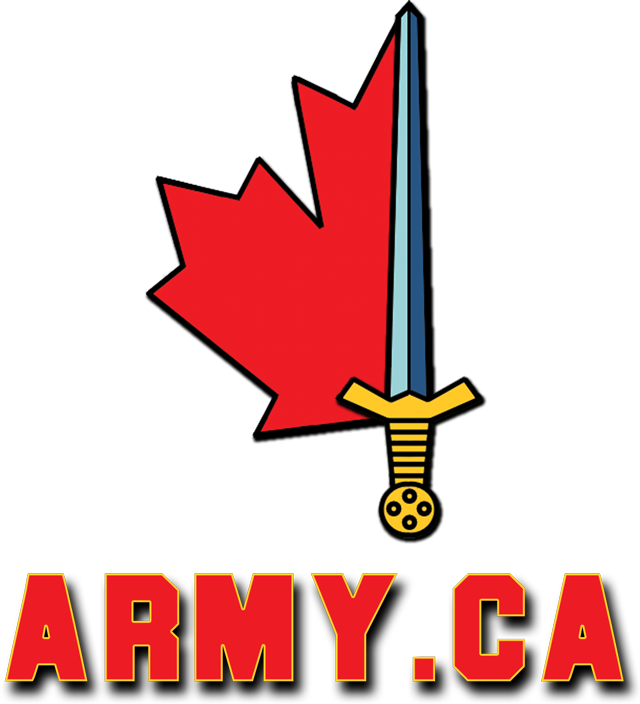Quirky
Army.ca Veteran
- Reaction score
- 4,140
- Points
- 1,260
Lol, it bridged someone's pocket book somewhere with tax payers cash.
Companies based in Quebec hired to do the conversions come to mind.

Lol, it bridged someone's pocket book somewhere with tax payers cash.
You speak wisely Master Jedi.....The way things are going the top guns may as well just order some extra packs of legal sized paper and fold their own planes. At least they won't need to worry about air worthiness or METARs.

The USN hasn’t flown Hornets in ages, the SuperHornet isn’t a Hornet like Canada’s. All the old CF-18 like Hornets the USN and USMC had are in the Boneyard rotting. As in understand it most of those had parts that we just as worn (and usually worse) than Canadian Hornets. The major problem was Canada has tried to hold on to a non supported design too long.Lots of critcal parts are hard to acquire for the F18 legacy jets. As the US military did not retire their legacy jets like they said they were going to. This put a strain on the available critical parts that already had a shortage due to replacement availability and lack of support for upgrades and replacements.
True, and for most Canadians allowed them to wallow in the delusion their Air Force was being looked after.Lol, it bridged someone's pocket book somewhere with tax payers cash.
So as per SOP you say…The public did believe it was going to significantly help with the situation. All 8t did was cost millions upon millions of wasted dollars to be spent. Not to mention the frustrations of those involved at the ground level trying to make the best of a horrible situation.
Yes which is to ignore defense matters until it really matters. Like now. Typically Canadian - as 100 years ago we did essentially the same thing.So as per SOP you say…
USMC still flies F/A-18C/D. The HEP2 upgrades we’re doing are also implemented on USMC’s Hornets. The USMC does not fly Super Hornets.The USN hasn’t flown Hornets in ages, the SuperHornet isn’t a Hornet like Canada’s. All the old CF-18 like Hornets the USN and USMC had are in the Boneyard rotting. As in understand it most of those had parts that we just as worn (and usually worse) than Canadian Hornets. The major problem was Canada has tried to hold on to a non supported design too long.
True, and for most Canadians allowed them to wallow in the delusion their Air Force was being looked after.
So as per SOP you say…
Realistically, I do not see any other option for the RCAF besides continuing along with the F-35A buy at this time.
I think that the numbers for the 2nd fleet will have to be higher than 45.At this time. And we've already paid for 16. The question is:
1) Do we need 88 frames? Original requirement was 65 for NORAD and NATO commitments. So can the growth go elsewhere?
2) Do we need 65 frames? Split the NATO and NORAD requirements and the hard coded NORAD fleet is probably 40-45 frames. Let's not forget that Eurofighter didn't bid and Dassault pulled out because of concerns meeting CAN/US security requirements. If that requirement isn't relevant for the aircraft committed to supporting NORAD, well that creates new options.
There's some options here:
1) Ignore it all. Accept the high risk of policy control from Washington. Take 88 Panthers.
2) Make room for a future more capable second fleet. Cut the order to 65 as originally envisioned. Try and get into one of the 6th gen programs. Take delivery in the late 30s or early 40s as capability growth.
3) Immediate second fleet. Cut the Panther order to just 45 frames. Immediately begin negotiations with Eurofighter and Dassault for a 45 frame order. Maybe even consider used frames that have 15 years left in them. Three used fleet could even be a bridge to the 6th gen fleet.
With respect to timelines, look at the Panther delivery schedule. There is time to actually even implement option #3.
2026 - 4 frames
2027 - 6 frames
2028 - 6 frames
2029 - 2032 ... I assume 18 per year.
Looking at that delivery schedule, Option #3 is the highest risk and needs to EIS in 2031 at the latest. Option 2 has time. 65 frames will be delivered in 2031. We can risk accept till 6th gen EIS. Or we can buy 25-30 used Typhoons or Rafales as a bridge till 6th gen EIS.
We're Canada. Let's be honest. We'll bitch and moan about the risk and then go with option 1 because every other option requires a ton of work on the part of DND, the CAF and industry. But if we're being honest about the risk from the US and the utility of using defence purchases as leverage, we should be looking at something like option #2 at least.
I think that the numbers for the 2nd fleet will have to be higher than 45.
Those planes in the 2nd fleet will have to carry the day, so to speak, if the 45 F35 dip below 40 planes over the next 15-20yrs.

[td]Lockheed Martin offers to create jobs in Canada if Ottawa commits to full order for F-35 fighter jets[/td][td][td] [/td]ERIC REGULY[/td][td][td] [/td]EUROPEAN BUREAU CHIEF[/td][td][td] [/td]ROME[/td][td][td] [/td]Lockheed Martin, the U.S. defence giant that builds the F-35 fighter jet, has offered to create more jobs in Canada if Ottawa buys all of the jets it said it would when the contract was announced in 2023.[/td][td][td] [/td] [td] [/td]Canada agreed to buy 88 warplanes but has a legal funding commitment for only 16 aircraft, the first of which is due to arrive in 2026. It does not have to purchase the remaining 72 from Lockheed Martin.[/td][td]A senior government source with direct knowledge of the F-35 purchase program told The Globe and Mail that it’s not just about the purchase price, but also about jobs. Lockheed Martin has approached Ottawa to offer to create more jobs in Canada if we buy all the jets, the source said.[/td]
If the F-35 is in production for the next 20 years, there's no need to commit capital to buying a full attrition reserve now.
As evidenced in Ukraine, costs and timelines for equipment get delayed in a war. Militaries need attritional stocks day one, not six to nine months later, if it's an expedited timeline.
If the F-35 fleet is being bought solely for NORAD duties, the other fleet that is now being bought for NATO duties is the one whose availability during war will be more concerning.
I don't share your optimism that any fleet will be single purpose.
A military cannot be designed for best case scenarios. Redundancies are needed.
Wait, isn’t that against what Trump is trying to do?Interesting take by Lockheed Martin…

Lockheed Martin offers to create jobs in Canada if Ottawa commits to full order for F-35 fighter jets
Canada’s contract with manufacturer obliges it to purchase 16 of the 88 aircraft it has orderedwww.theglobeandmail.com

